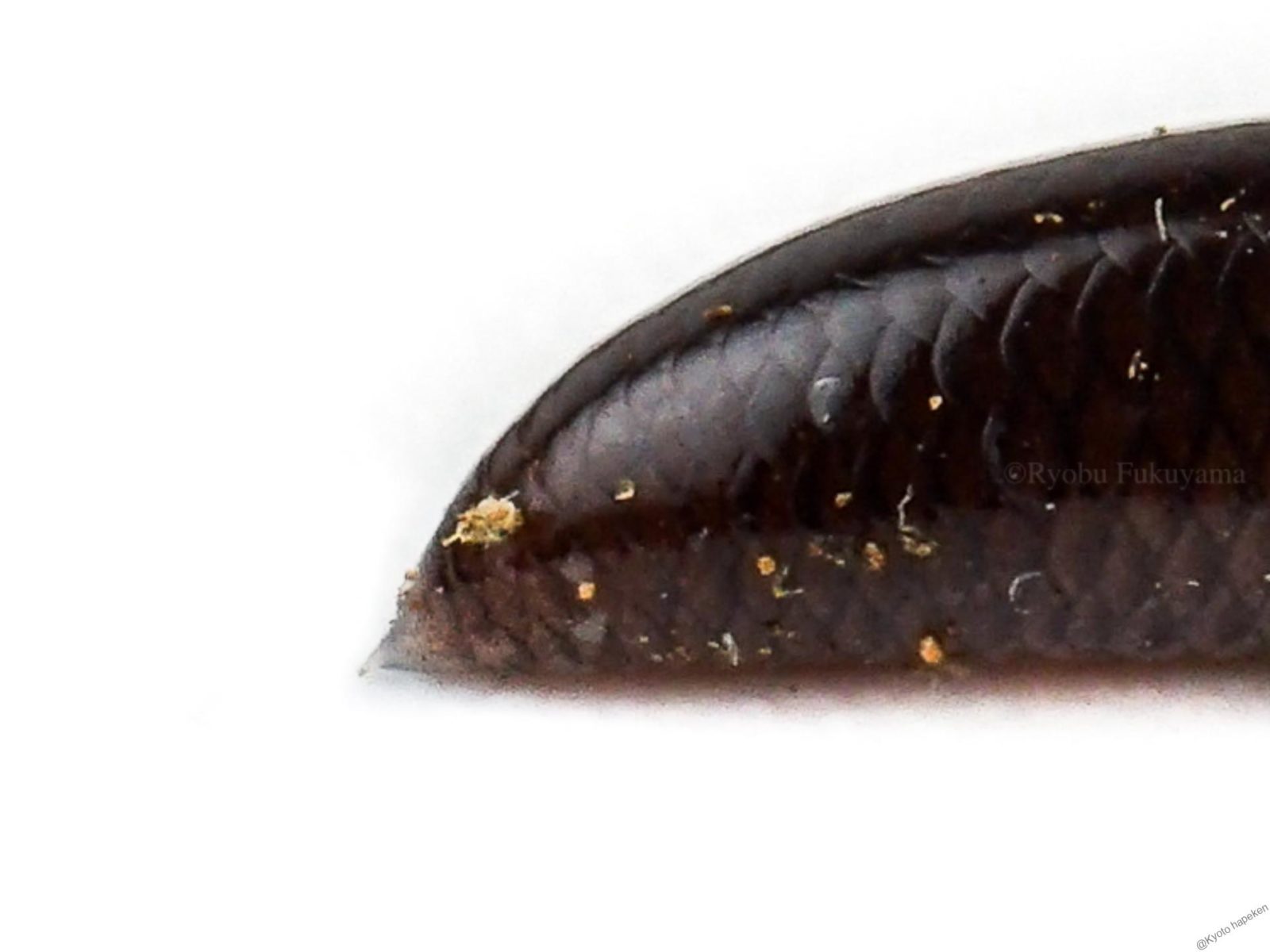Indotyphlops braminus (DAUDIN, 1803)
爬虫綱 > 有隣目 > メクラヘビ科 > インドメクラヘビ属 > ブラーミニメクラヘビ
執筆者:高田賢人
引用・参考文献
1. Mizuno T. & Kojima Y. 2015. A blindsnake that decapitates its termite prey. Journal of Zoology 297: 220–224.
2.Stuebing R. B., Inger R. F. & Lardner B. 2014. A field guide to the Snakes of Borneo Second edition. Natural History Publications (Borneo), Kota Kinabalu.p309.
3. 内山りゅう・前田憲男・沼田研児・関慎太郎.2002. 決定版日本の両生爬虫類. 平凡社, 東京. p336.
4. 横畠恭志・横田昌嗣・太田英利.2009. 尖閣諸島魚釣島の生物相と野生化ヤギ問題. IPSHU研究報告シリーズ研究報告 No.42: 307–326.
5. 清水善吉・玉井済夫・弓塲武夫・竹中利明・水野泰邦. 2020. 和歌山県における爬虫類および両生類の記録. 南紀生物 62(2):199–201.
6. 岡田滋. 2019. ブラーミニメクラヘビの単為生殖, 何て便利なふえ方!. 九州・奄美・沖縄の両生爬虫類. 九州両生爬虫類研究会編. 東海大学出版部. 神奈川: 228–229.
7. Wynn, A. H., Cole, C. J. & Gardner, A. L. 1987. Apparent triploidy in the unisexual brahminy blind snake, Ramphotyphlops braminus. American Museum novitates No. 2868; 1–7.
8. Patawang, I., Tanomtong, A., Kaewmad, P., Chuaynkern, Y. & Duengkae, P. 2016. New record on karyological analysis and first study of NOR localization of parthenogenetic brahminy blind snake, Ramphotyphlops braminus (Squamata, Typhlopidae) in Thailand. The Nucleus, 59(1), 61–66.
9. Ota, H., Hikida, T., Matsui, M., Mori, A. & Wynn, A. H. 1991. Morphological variation, karyotype and reproduction of the parthenogenetic blind snake, Ramphotyphlops braminus, from the insular region of East Asia and Saipan. Amphibia-Reptilia, 12(2), 181–193.
10. 太田英利. 2017. 第Ⅲ編9章 単為生殖の爬虫類. これからの爬虫類学. 松井正文編. 裳華房. 東京: 100–114.
11. Kamosawa, M. & Ota, H. 1996. Reproductive biology of the brahminy blind snake (Ramphotyphlops braminus) from the Ryukyu archipelago, Japan. Journal of Herpetology, 9–14.
12. Nussbaum, R. A. 1980. The brahminy blind snake (Ramphotyphlops braminus) in the Seychelles Archipelago: distribution, variation, and further evidence for parthenogenesis. Herpetologica, 215–221.





